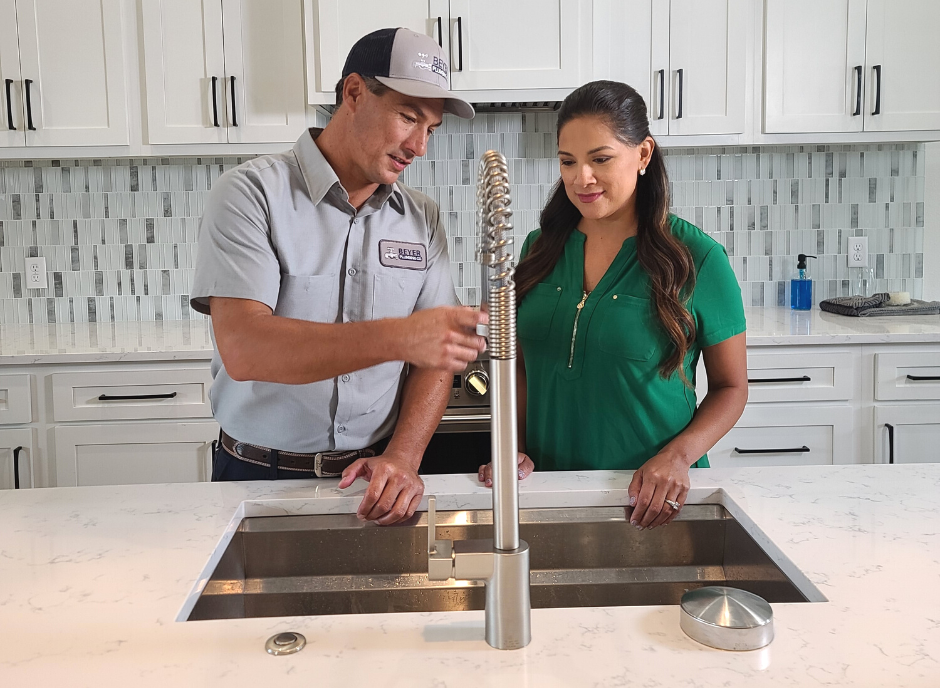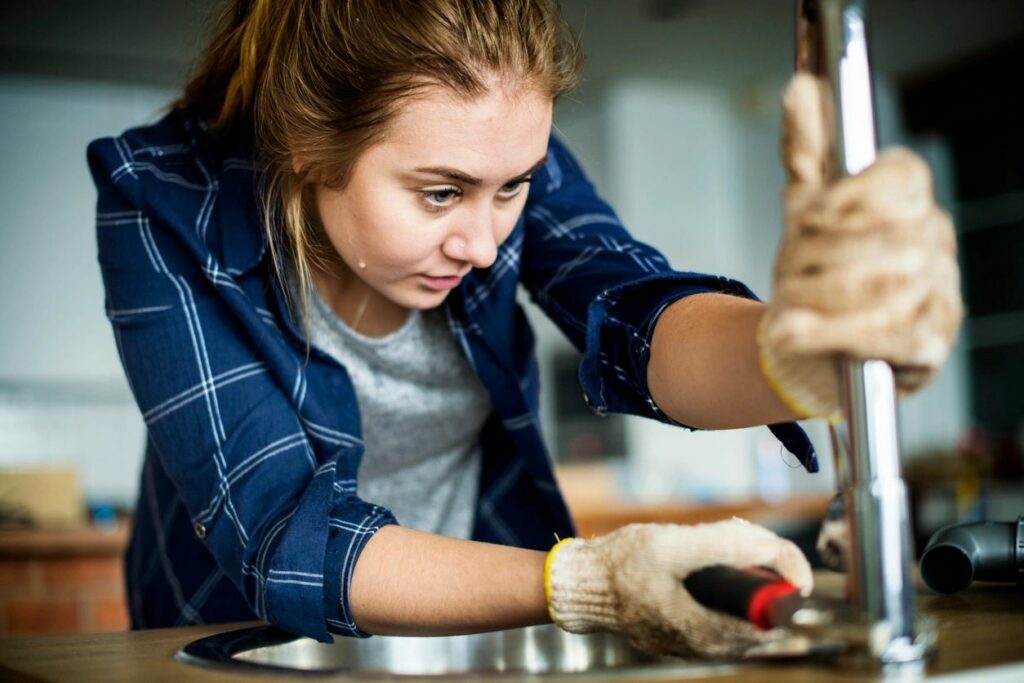The Upsides of Correcting a Broken Faucet
The Upsides of Correcting a Broken Faucet
Blog Article
We have found this post relating to Why It's Important to Fix Leaky Faucets below on the net and concluded it made perfect sense to write about it with you on this page.

Leaking faucets might feel like a small trouble, but their impact surpasses simply the inconvenience of the sound. From drainage to sustaining unneeded financial prices and health and wellness risks, overlooking a leaking faucet can cause various effects. In this short article, we'll look into why it's critical to address this usual home problem promptly and successfully.
Wastefulness of Water
Environmental Effect
Trickling faucets contribute dramatically to water waste. According to the Epa (EPA), a solitary faucet dripping at one drip per second can lose greater than 3,000 gallons of water each year. This not just strains water resources but also influences ecosystems and wildlife depending on them.
Step-by-Step Guide to Taking Care Of a Dripping Faucet
Tools Needed
Before attempting to fix a leaking tap, gather the required devices, including an adjustable wrench, screwdrivers, substitute components (such as washers or cartridges), and plumber's tape.
Usual Tap Issues and Their Solutions
Recognize the sort of faucet and the particular issue creating the drip. Usual issues include damaged washing machines, rusty valve seats, or defective O-rings. Describe maker instructions or on-line tutorials for step-by-step guidance on fixings.
Financial Expenses
Raised Water Expenses
Past the environmental effect, trickling faucets can blow up water bills significantly. The accumulated waste with time translates into greater energy expenses, which could have been prevented with prompt fixings.
Possible Building Damages
Moreover, prolonged leaking can cause harm to fixtures and surface areas surrounding the faucet. Water accumulation can cause staining, corrosion, and also architectural problems if left ignored, leading to extra repair work costs.
Health Problems
Mold and Mold Development
The constant visibility of moisture from a leaking tap produces a perfect atmosphere for mold and mildew and mold growth. These fungi not only jeopardize indoor air high quality however additionally posture health and wellness dangers, specifically for people with breathing problems or allergies.
Waterborne Conditions
Stationary water in trickling faucets can come to be a breeding ground for microorganisms and various other pathogens, increasing the danger of waterborne conditions. Contaminants such as Legionella germs thrive in stagnant water, potentially causing significant illnesses when ingested or inhaled.
DIY vs. Professional Repair work
Pros and Cons of DIY Repair
While some might attempt to deal with a leaking tap themselves, DIY fixings come with their very own set of difficulties. Without correct understanding and devices, DIY attempts can worsen the issue or result in insufficient repairs, extending the issue.
Advantages of Hiring an Expert Plumber
Employing a specialist plumber ensures that the underlying cause of the leaking faucet is attended to successfully. Plumbers possess the knowledge and devices to identify and repair faucet issues successfully, saving time and minimizing the risk of more damages.
Ecological Obligation
Individual Payment to Preservation
Taking obligation for repairing dripping taps lines up with broader initiatives toward water conservation and ecological sustainability. Every individual's activities collectively make a significant influence on preserving priceless resources.
Lasting Living Practices
By prioritizing punctual repair work and taking on water-saving practices, people contribute to lasting living methods that profit both existing and future generations.
Safety nets
Regular Upkeep Tips
To stop trickling faucets, do regular upkeep such as cleaning aerators, evaluating for leakages, and replacing worn-out parts promptly. Furthermore, think about setting up water-saving tools or upgrading to a lot more efficient fixtures.
Relevance of Prompt Repairs
Attending to trickling taps as soon as they're discovered stops more water wastefulness and potential damage, eventually conserving both water and cash over time.
Effect On Home Value
Perception of Well-Maintained Home
Preserving a residential property in good condition, consisting of attending to maintenance concerns like trickling faucets, enhances its viewed value and worth among potential customers or renters.
Impact on Resale Value
Residences with well-maintained plumbing components, including taps, command greater resale values in the realty market. Resolving dripping taps can contribute to a positive impact during residential property inspections and settlements.
Verdict
Addressing a leaking tap surpasses plain ease; it's an important step towards saving water, lowering economic prices, and safeguarding health and home. Whether with DIY repair work or expert support, taking action to repair trickling faucets is a small yet impactful means to promote responsible stewardship of sources and contribute to a healthier, a lot more sustainable future.
How to Fix a Leaky Faucet: Step-by-Step Repair Guide
A leaky faucet may seem like a simple annoyance, but if it's not fixed promptly, that leak could cost hundreds to potentially thousands. From water damage to mold, mildew, and high water bills, even a tiny leak can be catastrophic if left unattended. Damage like this can even affect the overall value of your home, so it's important to take the right approach for leaky faucet repair. You may need the help of a plumber in some cases, but we've got a few tips you can try on how to fix a leaky faucet before calling the pros.
Four Faucet Types
When you're learning how to fix a leaky faucet, the first step is knowing what kind of faucet you're working with! There are four common types.
Cartridge Faucets
Cartridge faucets come in one- or two-handled varieties. In one-handled cartridge faucets, hot and cold water combines in a single cartridge. In the two-handled versions, hot and cold water are controlled separately and mixed in the faucet.
Ball Faucets
Ball faucets have a single lever you push up and down to adjust the pressure and rotate to change the temperature. A slotted metal ball controls the amount of water allowed into the spout.
Compression Washer Faucets
They're the oldest type of faucet, but they're still used in many homes — especially older ones. Compression faucets have two separate handles that, when turned, raise or lower the washer that seals a water valve. This valve stops water from flowing through the faucet when it is turned off.
Disc Faucets
Disc faucets rarely need to be repaired due to their maintenance-free design. The water flow is controlled by two discs — the upper one raises and lowers against a fixed lower disc, creating a watertight seal. If your disc faucet starts leaking, you may need to replace the seals or clean residue buildup from the inlets.
Fixing a Leaky Faucet
Step 1: Turn Off the Water
Whether you're learning how to fix a leaky bathtub faucet or how to fix a leaky kitchen faucet, always turn off the water supply to your working area when you're fixing a leak. The last thing you want is a flood added to your list of things to fix.
Look for the shutoff valves below your sink or around the tub and turn them clockwise to stop the water flow. If your faucet doesn't have shutoff valves, you may need to turn off the water for the whole house. Check to make sure it's off by turning the faucet on. If nothing comes out, you're ready to start the repair.
Step 2: Take Apart the Faucet
How you disassemble your faucet depends on the type of fixture you have. You can use a flathead screwdriver to remove the caps on top of the handle or handles for cartridge and compression faucets. Inside, you should see handle screws. Unscrew these with a screwdriver to remove the handle.
Disc- and ball-style faucets will typically have an inlet screw near the handle, and removing that will reveal the interior of the faucet.
Detach the Valve Stem
For cartridge- and compression-style faucets, you'll see the inner valve stem or cartridge once you remove the faucet handles. If you have a compression faucet, unscrew the brass valve stem. If you have a cartridge faucet, pull out the cartridge. If your cartridge has been in place for a while, it may require some tools or extra force to remove it due to mineral deposits.
Examine and Replace Parts
Once you've removed the parts, check them out to confirm what needs to be replaced. You may see corroded rubber washers, O-rings, stems, or cartridges. On a ball-style faucet, check the seats and springs for damage.
If you need to repair a leaky disc faucet, check the inlet and seals on the lower disc.
Once you determine what parts must be replaced, visit your local hardware store. Bring the damaged parts with you to ensure you can purchase the correct components to replace them.
Clean Valves and Faucet Cavity
If you've removed a stem or cartridge, you may notice mineral buildup in the faucet's threads. Use white vinegar to clean the valve seat by soaking it for a few minutes, then scrub it away with a soft toothbrush and rinse with warm water. You can also clean the interior of the faucet in the same way.
Reassemble the Faucet
Once your faucet is cleaned and the required parts have been replaced, it's time to reassemble it. Put the pieces back together and slowly turn the water supply back on. Doing this slowly is crucial because too much initial water pressure can damage the new hardware you've just installed.
https://homewarranty.firstam.com/blog/how-to-fix-leaky-faucet

We hope you enjoyed our section on Why Are My Faucets Dripping (And Can I Fix It Myself)?. Thanks for taking time to browse our posting. Are you aware of another person who is excited by Water Dripping from Faucet: Why and How to Fix? Please feel free to promote it. I cherish your readership.
Report this page